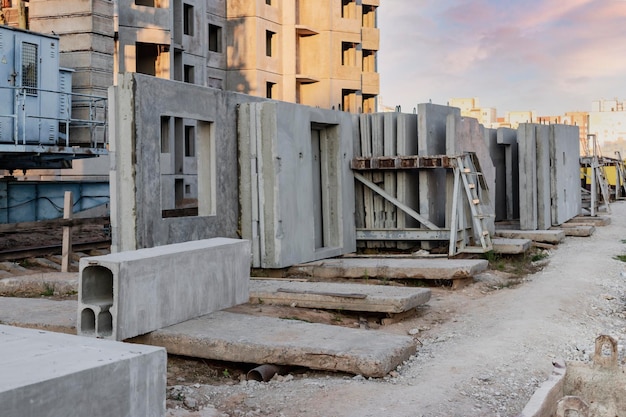
Many concrete building systems from ancient Italy and Greece that were used as building materials thousands of years ago are still standing today. The structural makeup and design of concrete benefited structures designed to move water, house sporting events, and provide gathering places.
After several centuries, another concrete revival occurred in the 1800s with the addition of steel reinforcement. This increased the strength of concrete, allowing much smaller concrete panels to be just as strong with less material. Concrete is now the world’s most popular building material.
Although precast concrete construction has been around for nearly as long, it didn’t gain traction in the West until the early 1900s. Precast concrete construction boomed around this time because precast walls were high quality, quick to erect, and could be made to look like other materials, such as granite.
After several centuries, another concrete revival occurred in the 1800s with the addition of steel reinforcement. This increased the strength of concrete, allowing much smaller concrete panels to be just as strong with less material. Concrete is now the world’s most popular building material.
Although precast concrete construction has been around for nearly as long, it didn’t gain traction in the West until the early 1900s. Precast concrete construction boomed around this time because precast walls were high quality, quick to erect, and could be made to look like other materials, such as granite.
System of Precast Concrete
Pouring concrete may appear to be a simple process: pour into a form or casting, wait for a while, then remove. While this is true for pavers, bricks, and other smaller applications, precast concrete production for large construction jobs necessitates far more engineering.
Specific strength considerations must be made depending on the size of the structure. Engineers determine the mix, how much reinforcement is required, and even the shape of the product, whether it’s a precast concrete panelled office building or manholes for buried infrastructure.
The forms are then prepared to accept the concrete. This includes determining the concrete thickness and placing reinforcements (usually rebar). The concrete can now be mixed and poured into the form. Samples are taken during the mixing process, also known as batching, to be tested for strength.
Once the process has begun, finished pieces are set aside for a period of time to harden to specific strengths. This can also be tested within the facility to ensure that every piece that leaves the plant is ready for use.
Specific strength considerations must be made depending on the size of the structure. Engineers determine the mix, how much reinforcement is required, and even the shape of the product, whether it’s a precast concrete panelled office building or manholes for buried infrastructure.
The forms are then prepared to accept the concrete. This includes determining the concrete thickness and placing reinforcements (usually rebar). The concrete can now be mixed and poured into the form. Samples are taken during the mixing process, also known as batching, to be tested for strength.
Once the process has begun, finished pieces are set aside for a period of time to harden to specific strengths. This can also be tested within the facility to ensure that every piece that leaves the plant is ready for use.
Precast for Custom Use
Concrete can be made for a variety of applications using the precast process. Retaining walls, railroad products, boat launch ramps, and other similar items. To ensure strength, custom precast pieces necessitate a little more engineering. However, once the cast is made, the process can be repeated indefinitely.
Precast Concrete Benefits
The installation of standard-sized buried infrastructure products, such as catch basins or manholes, is relatively quick. Forms are pre-programmed, the mixture is known, and the time to strengthen is consistent. That is one of the most significant advantages of precast products: Quick turnaround on large jobs allows for the delivery of 10, 20, or even 50 precast vaults all at once.
Because most precast production areas are in environmentally controlled facilities, concrete can be poured at any time of day, in any weather, and at any temperature. These enclosed plants can also save and reuse wastewater and other materials, preventing waste from being disposed of in landfills.
Although all concrete is strong, precast has advantages over poured-in-place. Installation time, long-term durability, less downtime, and other factors all work in favor of precast. The initial cost of pour-in-place may be lower, but when you consider scheduling difficulties due to Pacific Northwest weather, overall strength, and durability, are you really saving money in the long run?
Especially when it comes to buried infrastructure maintenance, repairs, or replacements. Although cast-in-place concrete outlasts other materials, it lacks the strength and durability of precast concrete. Less material is wasted during the precast process, and upgrades require less material.
Because most precast production areas are in environmentally controlled facilities, concrete can be poured at any time of day, in any weather, and at any temperature. These enclosed plants can also save and reuse wastewater and other materials, preventing waste from being disposed of in landfills.
Although all concrete is strong, precast has advantages over poured-in-place. Installation time, long-term durability, less downtime, and other factors all work in favor of precast. The initial cost of pour-in-place may be lower, but when you consider scheduling difficulties due to Pacific Northwest weather, overall strength, and durability, are you really saving money in the long run?
Especially when it comes to buried infrastructure maintenance, repairs, or replacements. Although cast-in-place concrete outlasts other materials, it lacks the strength and durability of precast concrete. Less material is wasted during the precast process, and upgrades require less material.
Environmentally Friendly
Structures made of precast concrete When bidding on public projects, check many “green” boxes for jurisdictions that require environmentally friendly practises and materials. Know that when you work with Arto Precast products, you’re working with an industry leader in sustainable practises.
As previously stated, concrete is a very durable product to begin with, which is one of the factors considered when obtaining Smart Certification. Our sister buried infrastructure plant in Woodland was the first in the country to receive this designation, which stands for Sustainable Materials Rating Technology. Our products, processes, and partners all contribute to a more sustainable present and future.
Each buried precast structure we manufacture has been strength tested to last a century – longevity is one of the factors in sustainability. Our products are environmentally friendly because they are chemically inert (no off-gassing) and made from raw and naturally occurring materials.
However, that is only half of the picture. Arto Precast wanted to make sure that when we started looking for partners or vendors, they shared our values in this regard. Furthermore, we chose companies that were as close to our Arto Precast plant as possible. This means shorter delivery times and lower emissions into the atmosphere.
As previously stated, concrete is a very durable product to begin with, which is one of the factors considered when obtaining Smart Certification. Our sister buried infrastructure plant in Woodland was the first in the country to receive this designation, which stands for Sustainable Materials Rating Technology. Our products, processes, and partners all contribute to a more sustainable present and future.
Each buried precast structure we manufacture has been strength tested to last a century – longevity is one of the factors in sustainability. Our products are environmentally friendly because they are chemically inert (no off-gassing) and made from raw and naturally occurring materials.
However, that is only half of the picture. Arto Precast wanted to make sure that when we started looking for partners or vendors, they shared our values in this regard. Furthermore, we chose companies that were as close to our Arto Precast plant as possible. This means shorter delivery times and lower emissions into the atmosphere.
